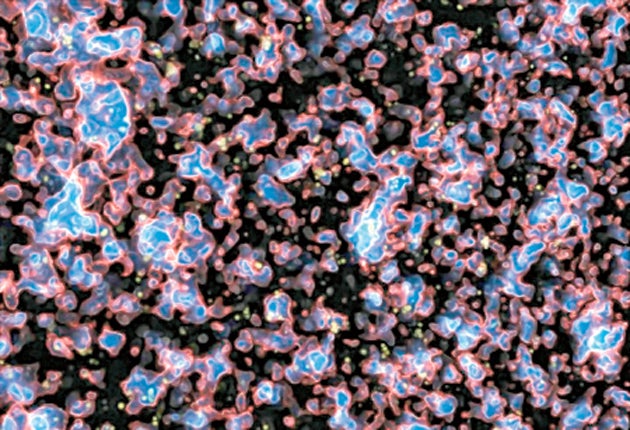Scientists get glimpse of universe as it was 13 billion years ago
The most distant object ever discovered takes researchers closer to the Big Bang

It has taken 13.1 billion years for the light emitted by the most distant galaxy in the known universe to reach the world's most powerful telescopes, a fact that has provided scientists with an unprecedented insight into the dawn of creation.
Astronomers confirmed yesterday that a galaxy known as UDFy-38135539 is the furthest source of light in the visible universe, which also makes it the oldest known object – it existed just 600 million years after all matter was created in the Big Bang some 13.7 billion years ago.
Confirmation that the galaxy is the oldest and most distant object sheds new light on a period of the universe's early history when the vast void of space was bathed in an opaque "fog" of hydrogen gas, which was slowly cleared by the intense ultraviolet light given off by the first stars and galaxies.
Scientists believe UDFy-38135539 consisted of about a billion stars and its light will continue shining at the current intensity for several tens of millions of years to come, although the galaxy itself may have long ago disappeared or been swallowed up by younger clusters of stars.
European astronomers said that UDFy-38135539 was also the first galaxy to be discovered that existed during an epoch of the universe's history known as "reionisation", when for between 100 million and 800 million years after the Big Bang the electrically neutral hydrogen gas that filled the cosmos was converted into a plasma of electrically charged ions.
When the universe cooled down immediately after the Big Bang, electrons and protons combined to form hydrogen gas during the so-called "dark ages", when there were few if any luminous objects. This period eventually ended when the first stars formed, emitting intense ultraviolet light that split or "reionised" the hydrogen back into protons and electrons, thereby clearing the opaque fog that had shrouded the cosmos.
Scientists believe that confirming and studying the nature of galaxies that existed during this crucial early chapter in the history of the universe will tell them more about how the first stars and galaxies formed and evolved into the diverse plethora of cosmic objects we can see today.
Mark Swinbank of Durham University, one of the scientists involved in the study using the European Southern Observatory's Very Large Telescope in Chile, said the discovery of the furthest known galaxy suggested that others must also have been present at the same time.
"There must be other galaxies, probably fainter and less massive nearby companions of UDFy-38135539, which also helped make the space around the galaxy transparent," Dr Swinbank said. "Without this additional help the light from the galaxy, no matter how brilliant, would have been trapped in the surrounding hydrogen fog and we would not have been able to detect it."
Professor Malcolm Bremer of Bristol University, a co-author of the study published in Nature, said detecting more distant galaxies would require the technical refinements of the next generation of telescopes, which have yet to be deployed. "These [current] observations are at the limit of what can be achieved today with the best current technology on the best telescopes available today," he said.
Join our commenting forum
Join thought-provoking conversations, follow other Independent readers and see their replies
Comments
Bookmark popover
Removed from bookmarks